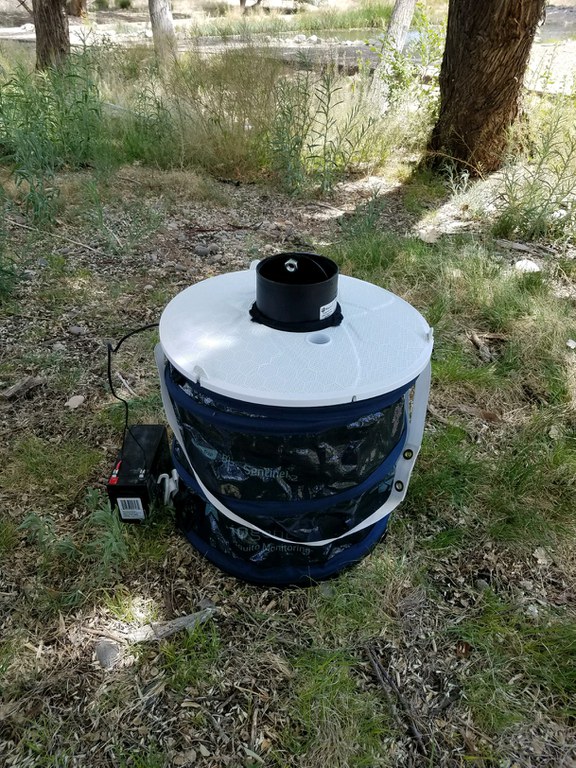Aedes aegypti, the Yellow Fever Mosquito
The City of Albuquerque Environmental Health Department (EHD) is requesting neighborhood participation in slowing the spread and establishment of an invasive mosquito species. EHD has recently begun documenting the rapid spread of the Yellow Fever Mosquito (Aedes aegypti) in several Albuquerque neighborhoods. We do not have any disease transmission in Albuquerque, but this is the species of mosquito attributed to the spread of diseases like Zika, Dengue, and Chikungunya. We appreciate your assistance with this important public health initiative. Please feel free to direct any questions to our department via 311.
Download this informational flyer to keep at home as a reminder to check your yard regularly or to share with your neighborhood. English or Spanish
Reporting Mosquitoes
- Call 311 for mosquito related questions or to request mosquito services
- 311 takes requests for mosquito control from Albuquerque and Bernalillo County residents
- 311 also takes requests for no-spray sites, this is recommended for properties that have beehives
- A 1000-foot buffer is maintained around the property as a no-spray area. This list is specifically maintained as part of the mosquito control program; other pesticides may be applied in the area by different agencies for different purposes.
- Buffers are subject to change when public-health concerns are present
- We also recommend signing up for DriftWatch so that other agencies can also see where your beehives are located (https://nm.driftwatch.org/)
- A 1000-foot buffer is maintained around the property as a no-spray area. This list is specifically maintained as part of the mosquito control program; other pesticides may be applied in the area by different agencies for different purposes.
Yellow Fever Mosquito Biology
- Prefer to live near people as humans are their primary blood source
- Commonly found inside homes
- They are considered aggressive biters
- They are stealthy mosquitoes that feed by approaching from behind and targeting ankles and elbows
- Unlike other mosquitoes in Albuquerque, they are active during the daytime
- They are most active approximately two hours after sunrise and several hours before sunset. They are known to bite at night in well-lit areas
- Like other mosquitoes, adults of this species rest on vegetation and emerge when disturbed
- They are container breeders and only require a small amount of water during larval development
- Often found breeding in:
- Rain barrels
- Bird baths
- Catch trays for potted plants
- Buckets
- Wheelbarrows
- Gutters
- Old tires
- Eggs of this species are drought resistant. Meaning that even after dumping water, the eggs can survive for long periods and still be viable when water returns
Disease Concerns
- These mosquitoes are capable of transmitting zika virus, dengue virus, chikungunya virus, and yellow fever
- None of these diseases are currently known to occur in New Mexico
Zika Virus
- According to CDC, no local mosquito-borne Zika virus transmission was reported in the continental United States in 2018
- Mosquitoes that can spread ZIka are found throughout the United States
- Zika is primarily spread through the bite of an infected Aedes aegpyti or Aedes ablopictus mosquito
- Other routes of transmission include:
- Mother to fetus
- Unprotected sex
- Blood transfusion
- Laboratory/healthcare exposure
- No vaccine is currently available
- Plan for traveling abroad
- Check the CDC website to see if Zika is active in the country you plan to visit.
Control and Prevention
- Prevent mosquito bites by wearing long sleeves and pants, applying insect repellant, and keeping screens on doors and windows intact
- Be sure not to leave doors open for extended periods of time, as these mosquitoes tend to find their way into homes
- Prevent mosquito breeding in your yard
- Dump any container holding water
- Scrub it with a disinfectant to ensure eggs won’t survive
- If possible, store the container upside down
- For containers that can’t be dumped, treat the water with an over-the-counter mosquito larvicide
- For rain barrels, ensure that all openings are covered with a fine mesh screen
- For ponds, consider adding mosquito fish to control mosquito larvae
Mosquito Surveillance
- The Urban Biology Division conducts regular mosquito monitoring in the Bosque from May-October
- Our monitoring program for Aedes aegypti is focused in residential neighborhoods and may last through November
- As a newly established program, our monitoring sites shift on a weekly basis
- BG Sentinel traps are placed in the yards of participating citizens for a 24hr period
- These traps use carbon dioxide and a scent lure to attract mosquitoes seeking a blood meal

